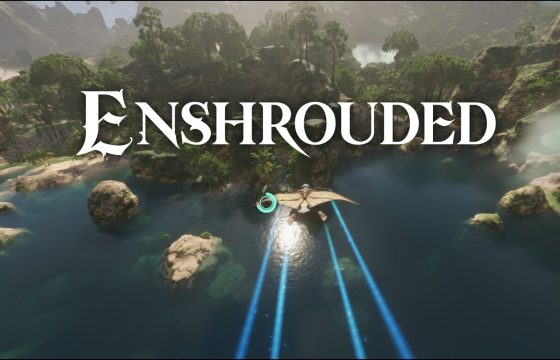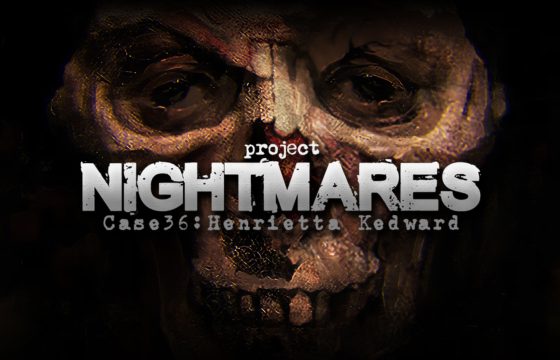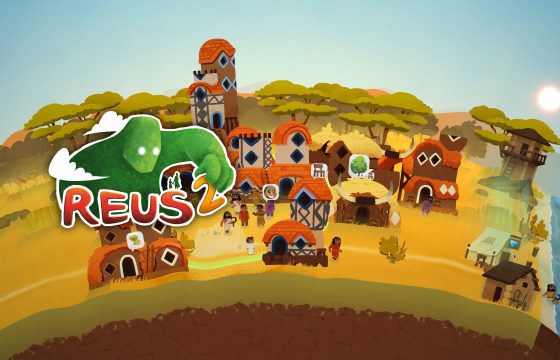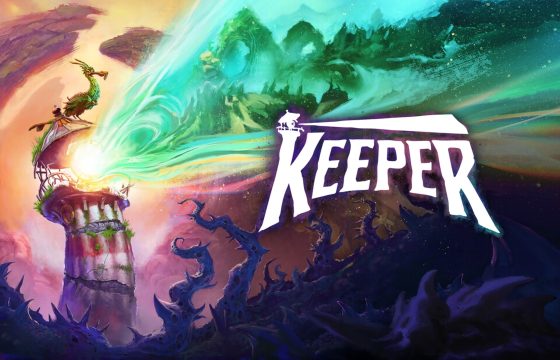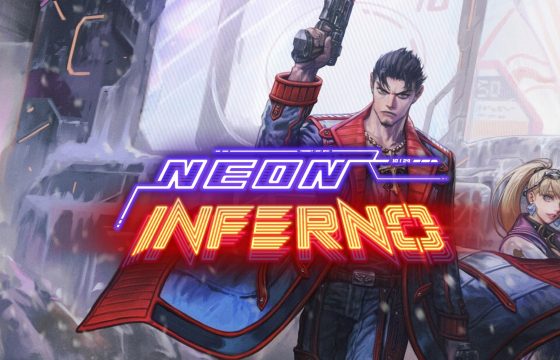A visual novel with steel balls (literally). Jump the Track mixes satire, style, and pachinko to tell the absurd, heartfelt story of a teen caught in a class war.
Seed by Seed, the French indie collective, created Jump the Track with rebellious flair and a razor-sharp wit. The game blends biting social satire with a pop-anime aesthetic, resulting in a vibrant, absurdist experience that doesn’t pull its punches.
It mixes visual novel storytelling with arcade-style pachinko boards. Here, steel balls don’t just test your reflexes—they shape your identity. Your performance unlocks emotional responses, and those responses unlock narrative paths. Pride, diplomacy, seduction, deceit: four ways to face the world and yourself. And they all shape Sam, the protagonist.
The game landed on Steam in late May 2025 and lasts about three hours—but if you stop to reflect on what it’s actually saying, it could echo much longer.
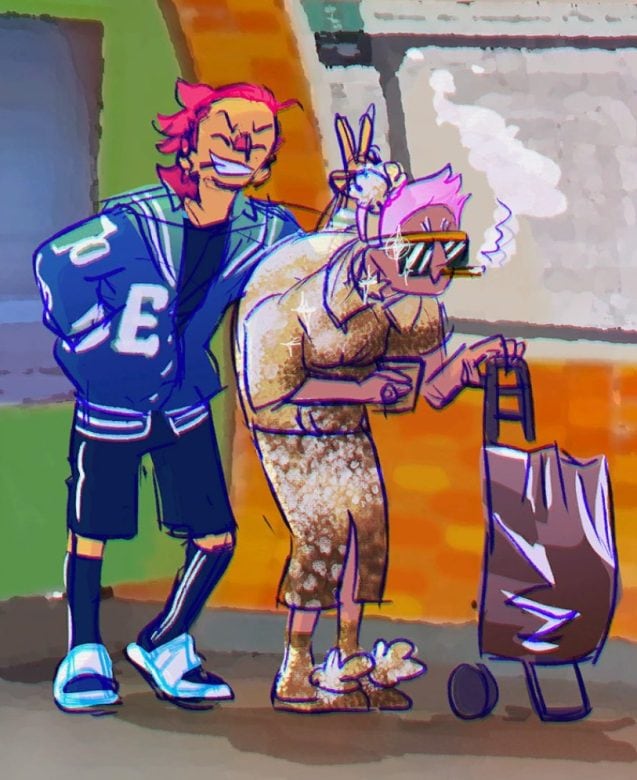
Sam, or the Art of Staying Afloat
So who is Sam? He’s a teenager—maybe freshly 18—with a red ponytail, a smirk always half-loaded, and a knack for knitting. Yes, knitting. Sam partly makes a living selling his creations online. He lives with his mom, Pat, a warm but exhausted woman who drives a city bus all day and naps slumped over the steering wheel. Literally.
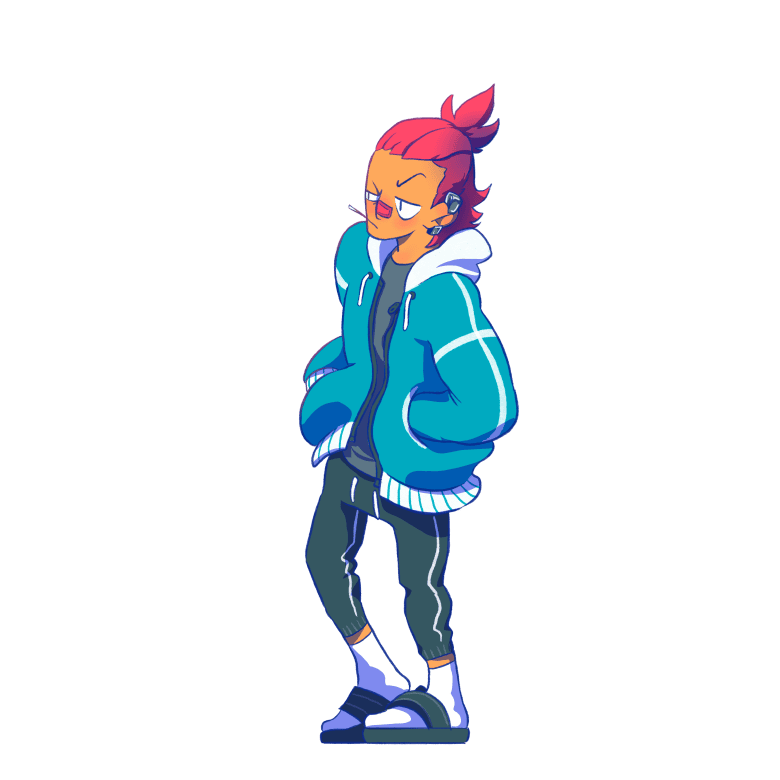
Sam wants to help with money, but Pat holds onto her independence fiercely, even as exhaustion crushes her.
Sam also has a childhood friend, Axel, a Black kid who’s practically his brother. They grew up gaming together, dodging bedtime and getting scolded by Axel’s parents. Now Axel watches him with growing concern: Sam acts impulsively, immaturely, recklessly.
And Sam’s job? It’s barely legal. He works as a “henchman” for Pierre, a powerful businessman who runs the island with mob-style tactics. Sam isn’t bad—he’s generous, idealistic even—but he’s learned to survive. And sometimes, survival means doing laundry for Pierre.
A Teddy Bear From Hell
The story kicks off with a mistake. Sam accidentally burns a teddy bear in the dryer. But not just any bear. This one belonged to Nina, Pierre’s spoiled and beloved daughter. It was a rare, limited-edition plush. Sam panics.

Pierre doesn’t do forgiveness. Just ask Max, a former employee now in a wheelchair—punished for “disappointing” the boss. Sam fears for his life.
Then, by chance, Axel convinces him to enter a raffle—the Tombola—that’s happening that night. The grand prize? The same model teddy bear.
The game’s rigged, of course. But Sam has nothing left to lose.

The Island’s Faces and Masks
On his desperate mission, Sam meets a string of unforgettable characters—each drawn with flair and instantly recognizable personalities. The character design turns heads, but the writing gives them depth.
Take Arthur, for example. He first appears as a conspiracy nut rambling about government plots. But beneath the paranoia lies a disappointed idealist, part of a secret group called the Underground. They want to bring down the social hierarchy and give the island back to its people.

Arthur talks like a mystic and channels a bit of New Age energy. He reads Sam like a book: kind-hearted but control-obsessed, too proud to accept help. He guides Sam through a vision—a mysterious woman in a casino named Henriette—who later becomes a key player and emotional spark.

Sam also finds shelter with Osman, an Arab kebab chef wielding a deadly balde for a left arm. He seems like a former soldier—cynical, battle-worn, but still willing to fight for a cause. Jenny, better known as Miss Beauty (clearly modeled after Canadian supermodel Winnie Harlow), sends Sam his way.

Jenny straddles two worlds. She’s Pierre’s official partner but sympathizes with the Underground. She plays both sides—or maybe she’s trying to escape them both.
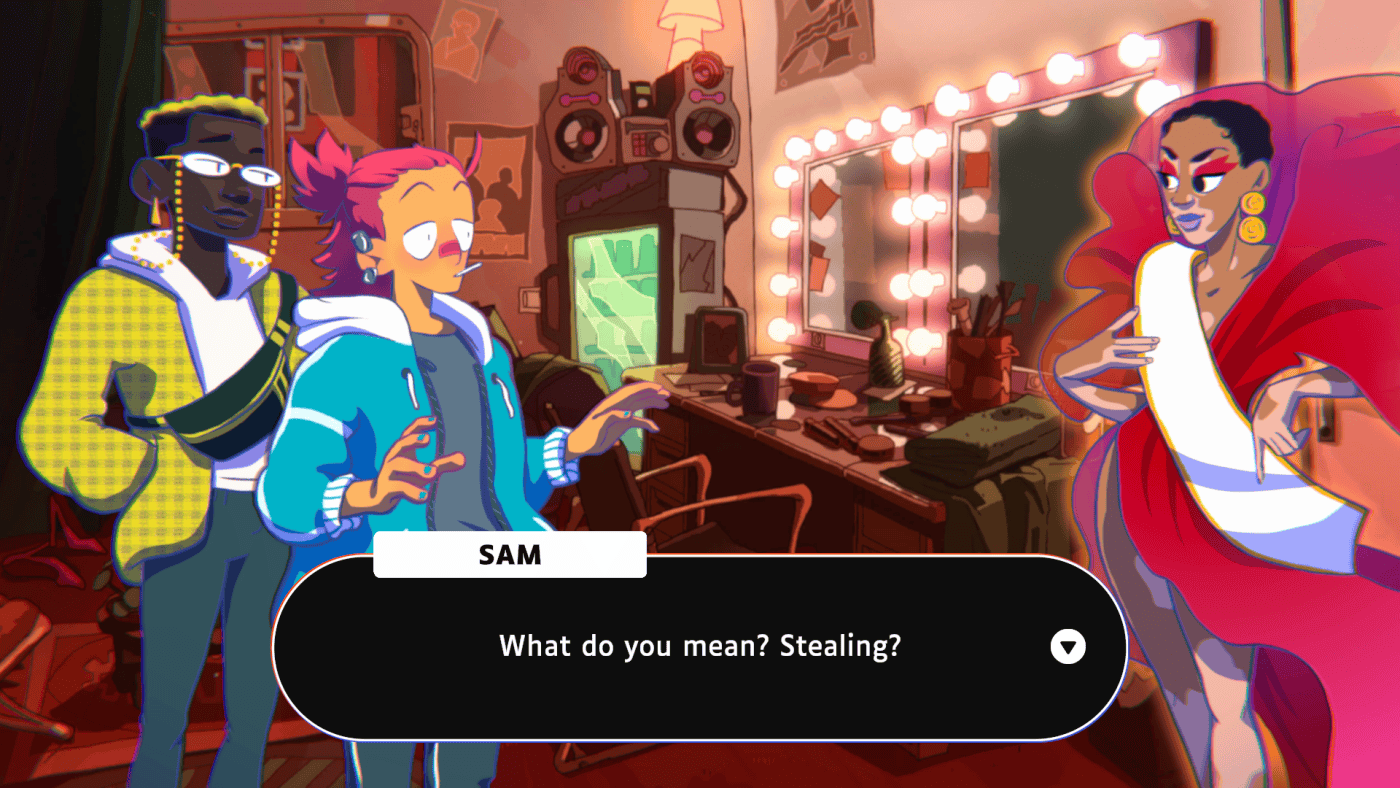
Traderbots and the Absurd Truth
One of the game’s most surreal—and sharpest—scenes unfolds in the Stock Exchange. Sam, still chasing raffle tickets, walks into a glowing, monolithic building. Inside, he finds that sentient robots manage the global markets. People call them Traderbots, but they prefer:
“We call ourselves die Überlegene Berechnungsmaschinen.”
Superior calculation machines. Dressed like vintage bankers, they speak with polish and proudly describe themselves as the shepherds of deregulated capitalism:
“In a world regulated by unregulated economy, you need shepherds to look after the markets.”
The irony hits hard. Sam mutters:
“I guess building sentient robots was cheaper than ending capitalism.”
The Traderbots casually name-drop companies like Dalembert, Zenodoros, BATIBRUT, and then—with eerie nostalgia—mention how some of their peers found comfort in inanimate objects and “left the exchange.” A sliver of humanity—or lunacy—bleeds through the wires.
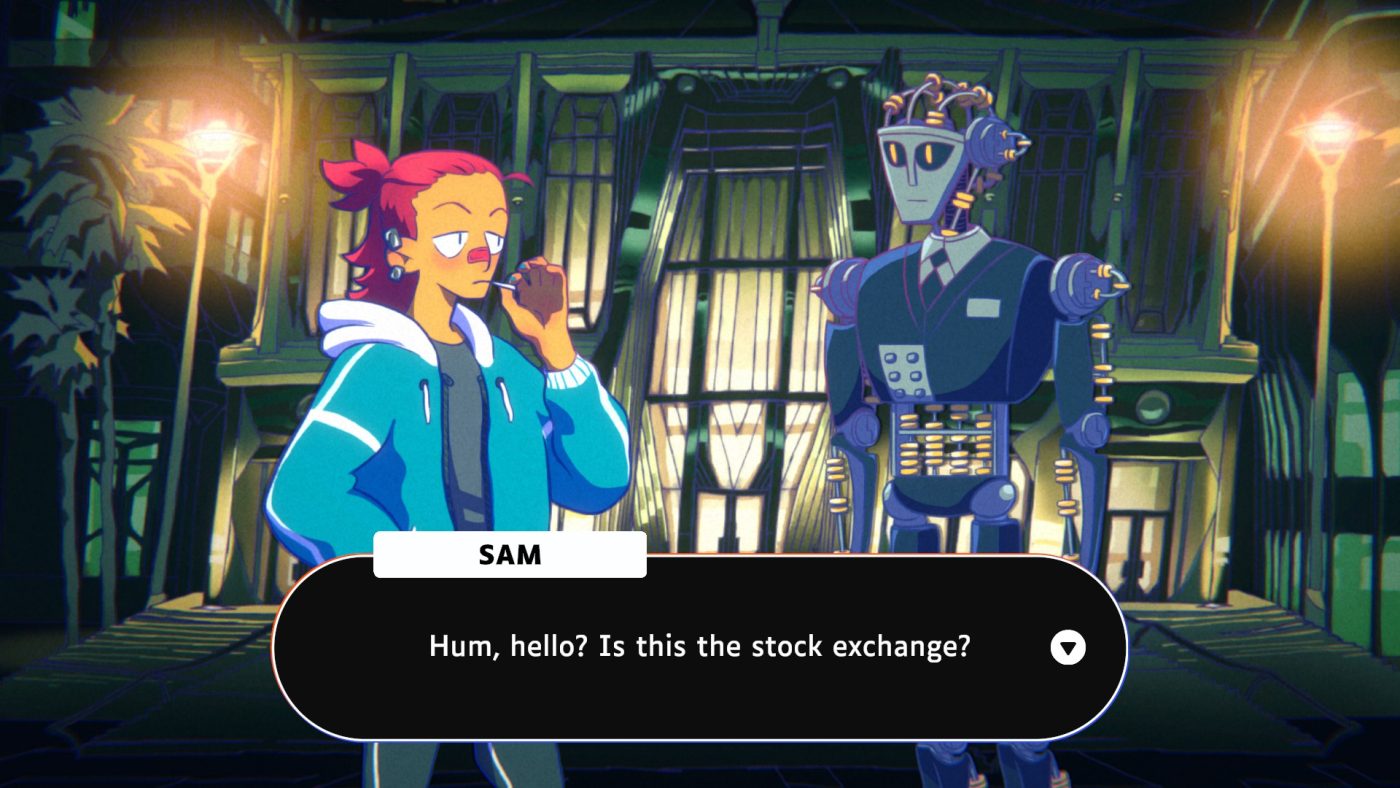
Raffle, Scam, and Revolution
Sam’s plan fails. He doesn’t win the bear—but he uncovers something bigger: the raffle’s a scam, a trap designed to distract and manipulate the underclass.
Then Pierre confronts him.
But the bear wasn’t the issue. Pierre feels jealous. He thinks Sam tried to seduce Jenny. In a burst of wounded pride, the mob boss tries to kill him.
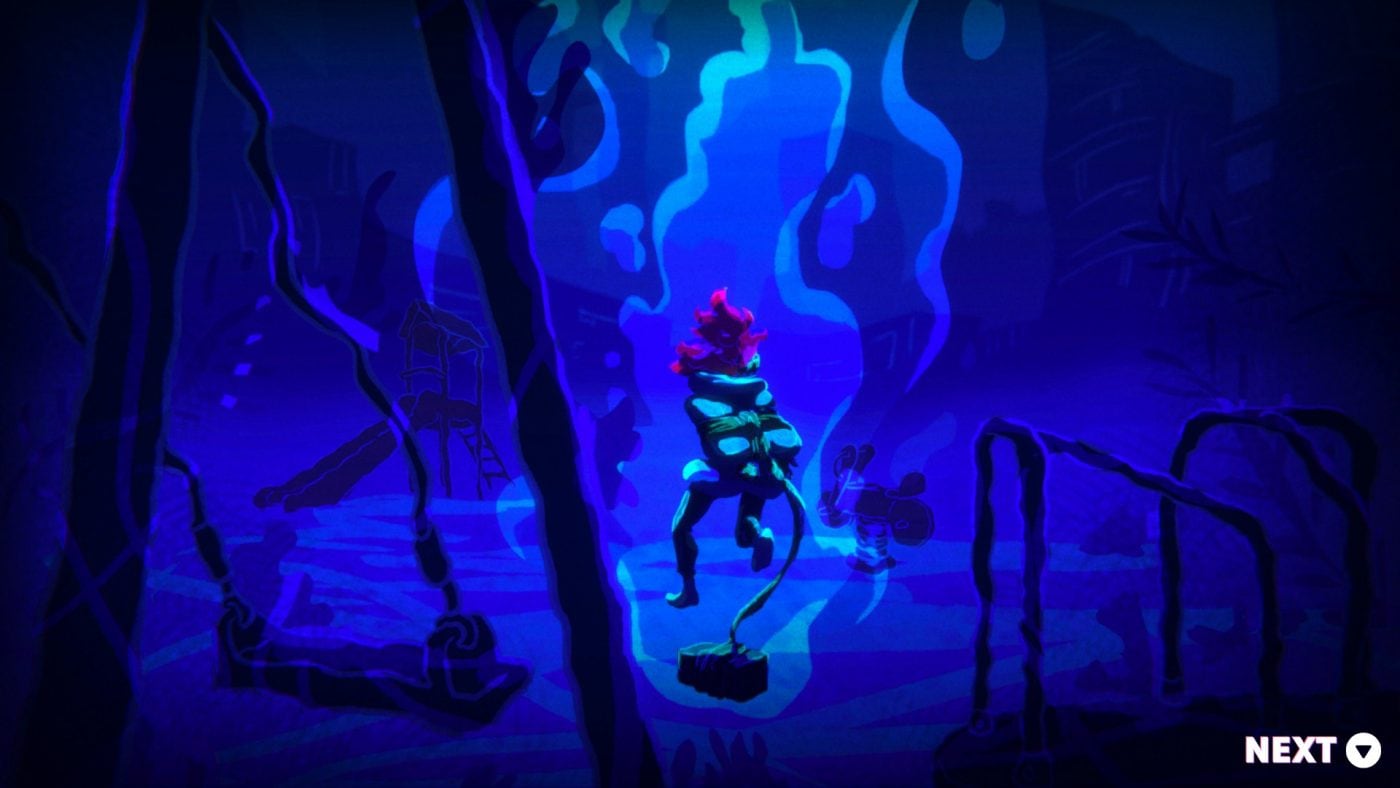
Sam survives thanks to Osman and Arthur, with Axel jumping in at the right moment. That’s the turning point. The city starts to riot. People unite. Masks fall.
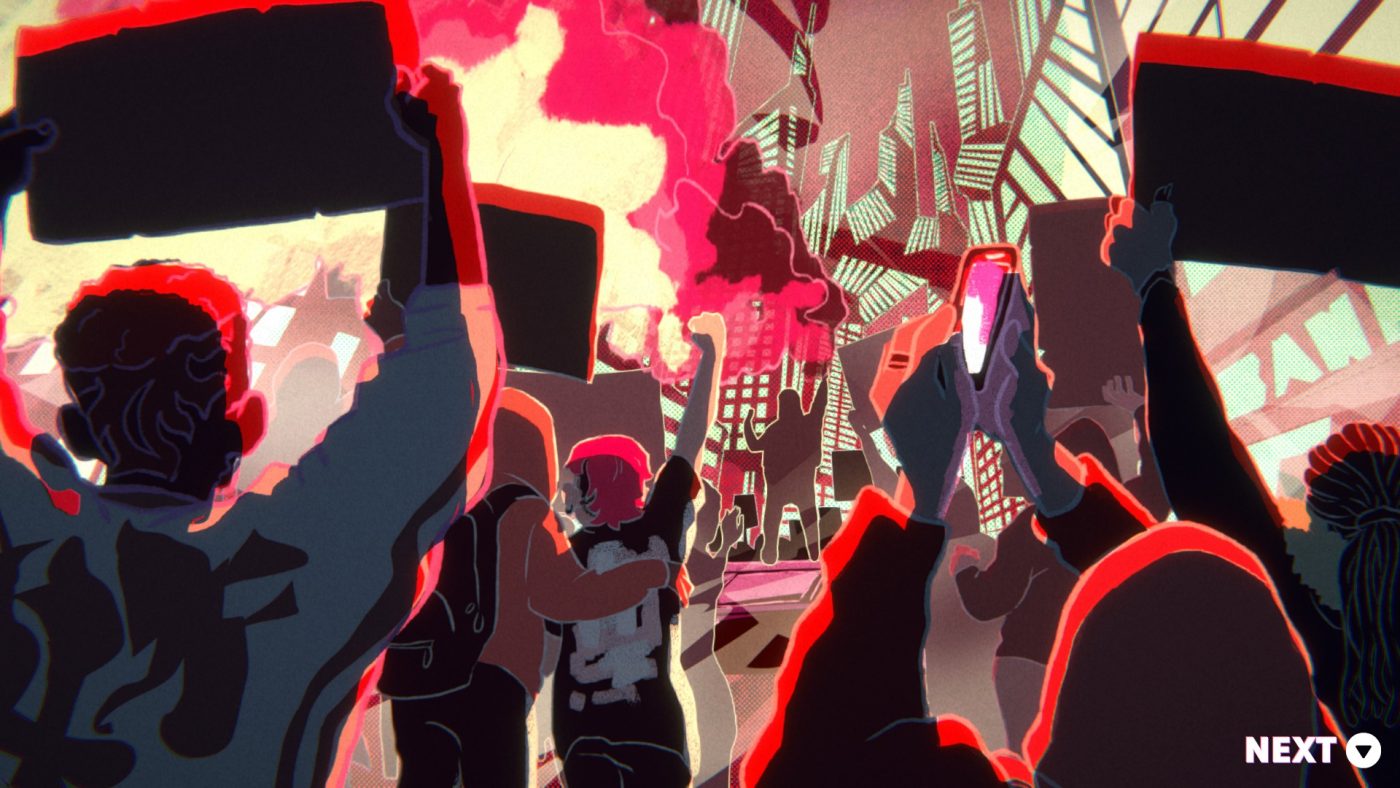
The Dam, the Maud, and the Ghosts
A massive dam splits the island, flooding a district called the Maud—once lively, now submerged and forgotten. Sam used to live there with his mom before they lost everything. He never processed that trauma. But now, it rises to the surface.
Osman proposes one last mission: blow up the dam, drain the water, and return the Maud to the people. They need explosives. They need resolve. And they need to choose.
Sam wants revenge. But Axel stands in his way. The two friends clash, hurt each other, then finally make peace. It’s one of the most emotional scenes in the game.
The message lands: no one changes the world alone. No one heals from rage without confronting love.
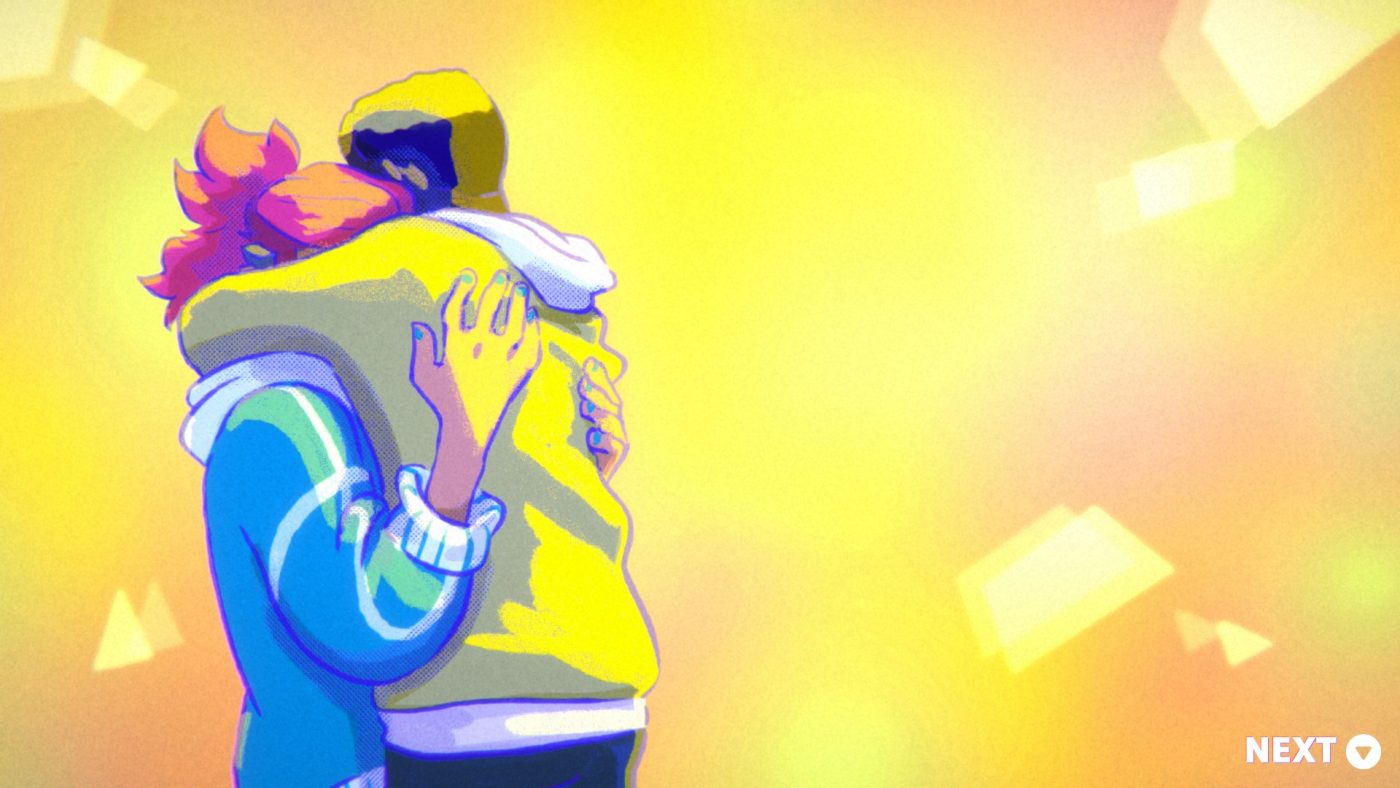
A Patchwork of Emotions (and Gameplay)
Jump the Track keeps its gameplay simple but smart. Every emotional fork triggers a pachinko game that decides what Sam can say. Skill, luck, and strategy shape the story’s direction.
During pachinko rounds, Sam doesn’t just play for tickets—he plays to define himself. Each challenge unlocks one of four emotional modes in dialogue: fierceness, diplomacy, seduction, and lie. Depending on how you maneuver the board, you can pick approaches that are more assertive, more conciliatory, more charming, or more cunning. This system mirrors how Sam shapes his emotional identity, scene by scene.
Every character you meet unlocks a special move, giving you better odds during matches. My favorite? Osman’s move—hands down.
If you mess up, the game keeps going. No do-overs. No retries. Just consequences that pile up. This system fits the game’s core theme perfectly: losing control in a chaotic world.


Conclusion – Laugh, Resist, Stitch Back Together
Jump the Track feels like an existential comedy wrapped in a visual novel. It’s sharp, political, satirical—and oddly comforting. The visuals look phenomenal, the writing stays clever and raw, and the characters come alive instantly.
The game doesn’t aim for neutrality. It takes a stand. It shouts back. It does so with heart and flair. Sure, it’s messy at times—the gameplay can feel random, the choices uneven—but the energy feels real. And that matters.
After all, this is the story of a knitting kid who torches a teddy bear and ends up leading a revolution.
Tell me that’s not the perfect metaphor for 2025.
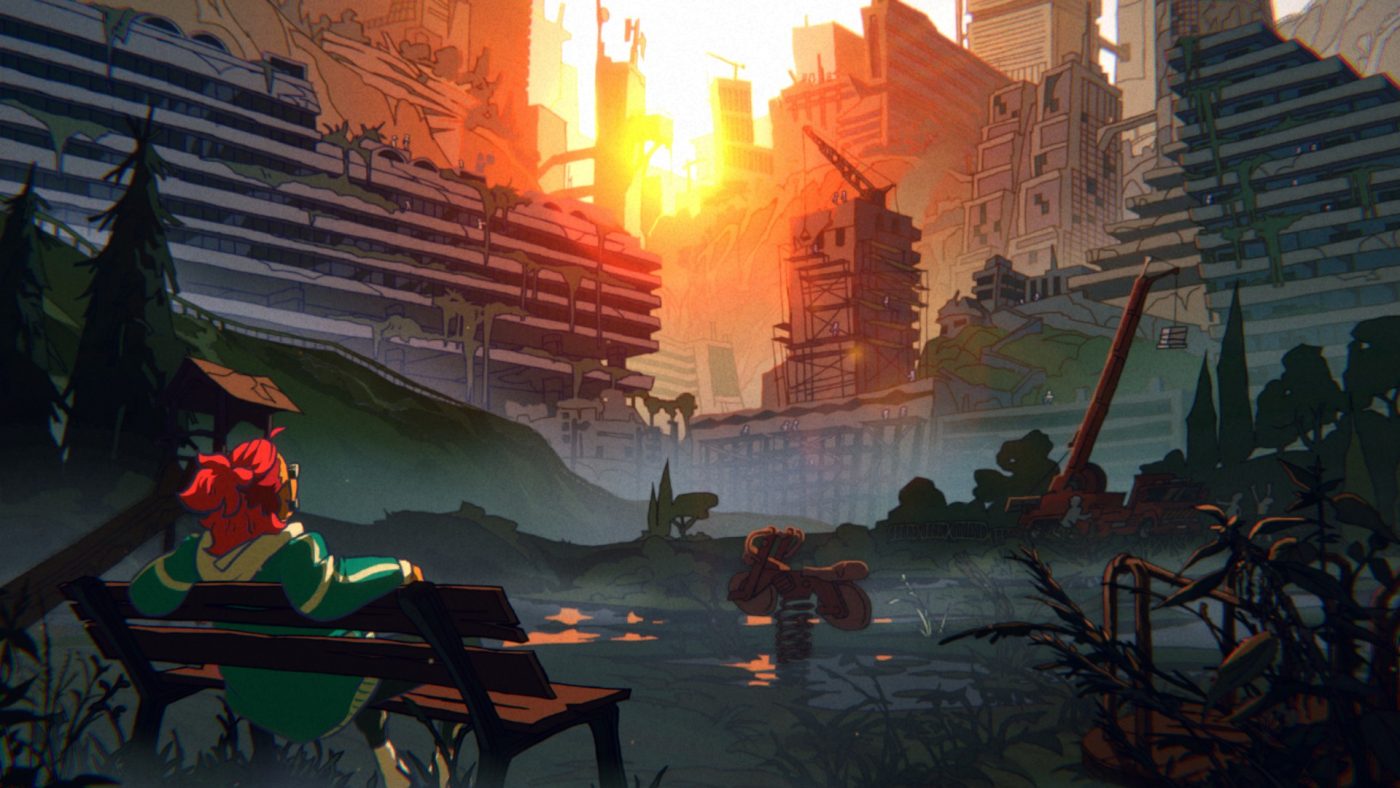
If you want to know more:
Jump the Track
PRO
- Brilliant writing – Sharp, witty dialogue that gives each character an immediate voice and depth.
- Outstanding visual style – Bold character design and expressive environments with a strong artistic identity.
- Memorable characters – Diverse, emotionally layered personalities with believable motives and voices.
- Clear and bold themes – Tackles class struggle, trauma, friendship, and rebellion with clever commentary.
- Unique gameplay – The pachinko-visual novel hybrid feels fresh, tying mechanics directly to emotional choice.
- Short but impactful – Around 3 hours of meaningful, tightly-paced storytelling.
CON
- Gameplay feels chaotic at times – Pachinko outcomes often rely on luck, and available choices can feel unbalanced.
- Limited replay value – Branching paths exist, but they don’t drastically reshape the main arc.
- Some narrative beats feel rushed – Key story turns (like the uprising’s finale) could have used more buildup.





